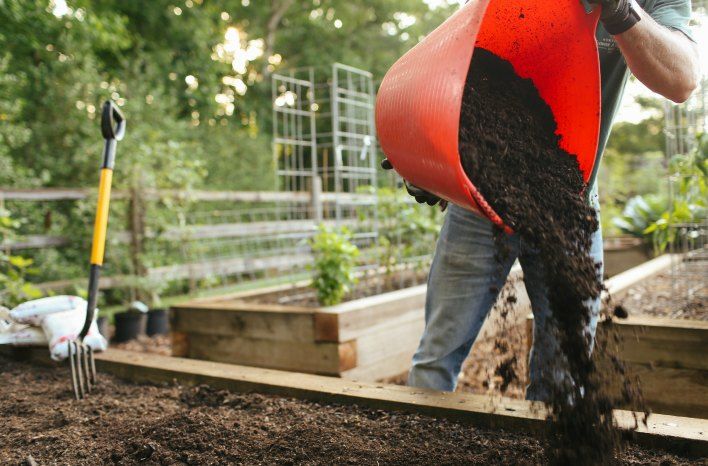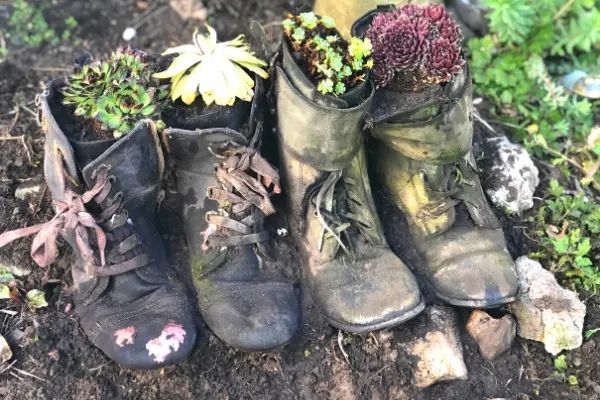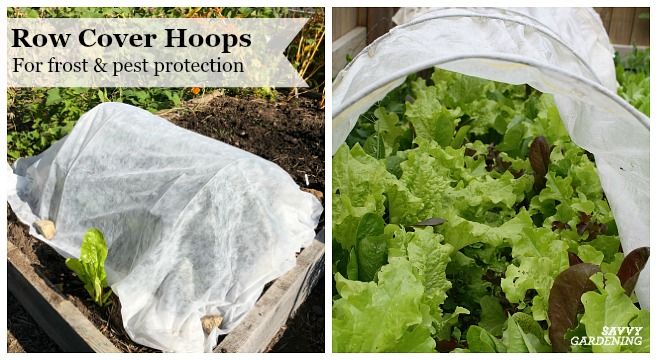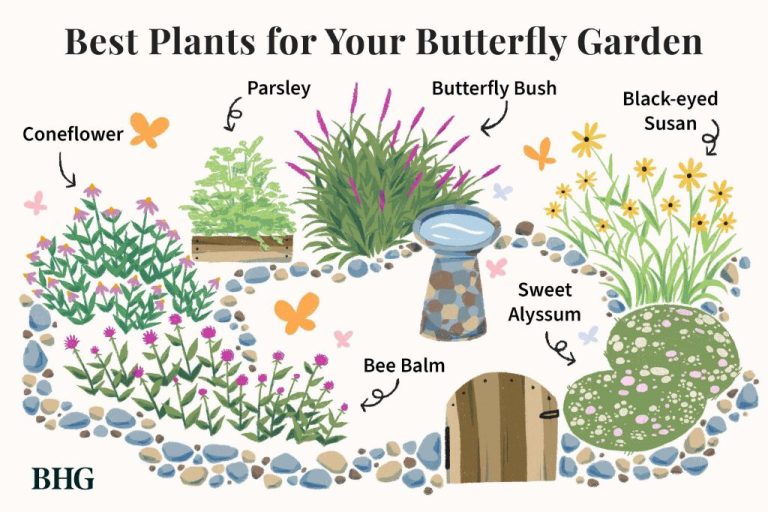Understanding Soil: A Beginner’S Guide To Soil Types And Preparation
Soil is the top layer of the earth’s surface that is composed of mineral particles, organic matter, water, air and living organisms (Soil Health, 2022). Healthy soil is extremely important as it provides essential nutrients, water, and support to help plants grow. It also filters water, recycles nutrients, provides habitat for organisms, and plays a key role in food production. Soil quality can be affected by factors like erosion, compaction, contamination and nutrient deficiencies. There are several major types of soil that differ in composition and properties.
Soil is a critical component for agriculture, food production, and the overall health of the environment. Understanding the different soil types and how to properly manage and prepare soil is foundational knowledge for farmers, gardeners, and anyone interested in growing plants. This beginner’s guide will provide an introduction to the major soil types, soil structure and texture, pH, key nutrients, and tips for improving soil health through compost, mulch and other methods.
Major Soil Types
The three major types of soil are sand, silt, and clay. They are categorized based on their particle size and composition. Knowing the different soil types is important for gardeners and farmers, as each type has its own properties and is suited to different uses.
Sand
Sandy soil is made up of large particles and feels gritty to the touch. It consists of small rocks or minerals like quartz and feldspar. Sand particles are the largest of the three soil types. This soil drains well and warms up quickly in spring, which makes it suitable for early planting. However, sand does not retain water or nutrients well, so it requires more frequent watering and fertilizing. Plants that thrive best in sandy soils include cucumbers, melons, squash, and roses.
Silt
Silt particles are smaller than sand but coarser than clay. Silt soils feel smooth and powdery. They hold more water than sand but drain well and permit good air circulation. Silt provides a good balance of nutrients and drainage for plant growth. Crops such as corn, small grains, alfalfa and vegetables grow well in silt loam soils. However, silt lacks cohesiveness and is prone to erosion.
Clay
Clay soil contains the smallest particles. It feels sticky and dense compared to the others. Clay is made up of a combination of minerals like vermiculite, smectite and illite. It retains water well and provides nutrients vital for plant growth. But, heavy clay soils have poor drainage and aeration. They are slow to warm in the spring. Plants suited to clay include lilac, primrose, bleeding heart and fruit trees.
Understanding the differences between sand, silt and clay is important when preparing soil for gardening or farming. The ideal soil, called loam, consists of a mixture of sand, silt and clay in relatively equal amounts.
Soil Texture
Soil texture refers to the size distribution of different particles that make up the soil. The main soil particles are sand, silt, and clay. Sand particles are the largest, between 0.05-2.0 mm in diameter. Silt particles are medium-sized, between 0.002-0.05 mm. Clay particles are the smallest, less than 0.002 mm in diameter.
The proportion of sand, silt, and clay determines the soil texture. To determine soil texture, a sample can be analyzed in a laboratory for precise measurements. A simpler method is using the “soil texture triangle” which allows classification of soil by percent composition of the different particles.
The soil texture triangle has percent sand on the bottom axis, percent clay on the left axis, and percent silt on the right axis. Based on the percentages, the soil sample can be classified into one of twelve major soil texture types. These include clay, silty clay, sandy clay, silt, loam, sandy loam, loamy sand, etc. Soil texture affects nutrient retention, drainage, aeration and root growth.
Knowing the soil texture is important for gardeners and farmers. Clay soils hold nutrients well but drain poorly. Sandy soils drain well but don’t hold nutrients. Loam is ideal, balancing particle sizes. The soil texture determines preparations needed before planting and crop choices.
Source: https://www.biologysimulations.com/post/how-to-use-the-soil-texture-triangle
Soil Structure
Soil structure refers to the arrangement of soil particles (sand, silt, clay, and organic matter) into groups of aggregates or peds. These aggregates can have different shapes and sizes based on factors like soil texture, management practices, and biological activity.
According to the Merriam-Webster dictionary, soil structure is defined as “the arrangement of soil particles in various aggregates differing in shape, size, stability, and degree of adhesion to one another.” 1
Some of the main types of soil structure include:
- Granular – small, porous, crumb-like peds
- Blocky – block-shaped peds
- Platy – flat, plate-like peds
- Prismatic – vertical columns of peds
- Columnar – tall columns of peds
Good soil structure is important for several reasons. It allows movement of air, water, and growth of plant roots through the soil. Good aggregation also protects soil from erosion and improves nutrient cycling. Soil structure can be improved through additions of organic matter and avoiding excessive tillage.2
Soil pH
Soil pH is a measurement of the acidity or alkalinity of soil. It is measured on a scale of 1 to 14, with 7 being neutral. Acidic soils have a pH below 7, while alkaline soils have a pH above 7. The pH level affects nutrient availability for plants. Most plants grow best in slightly acidic soil, with a pH between 6.0 and 7.0. However, some plants prefer more alkaline or more acidic soils.
Testing soil pH is important to understand the current conditions and determine if the pH needs adjusting for optimal growth. Soil pH can be tested using probes, test kits and indicator solutions. These provide a reading of the pH level based on the soil reaction with the testing solution.
If the soil pH is too high or low, it can be adjusted by adding amendments. Elemental sulfur can be used to lower pH in alkaline soils. Lime or wood ash can raise pH in acidic soils. Proper pH levels allow plants to access nutrients necessary for growth and prevent toxicity from excessive nutrients. Regular testing and monitoring helps maintain the ideal pH over time.
Understanding soil pH is foundational knowledge for gardeners and farmers seeking to provide plants the optimal growing environment. Adjusting and maintaining the preferred pH unlocks the nutrients plants need to thrive.
Soil Nutrients
Plants require essential nutrients from the soil in order to grow and thrive. These nutrients are classified as either macronutrients or micronutrients.
The main macronutrients plants need are: nitrogen, phosphorus, potassium, calcium, magnesium, and sulfur. Micronutrients needed in smaller amounts include iron, manganese, boron, zinc, copper, molybdenum, and chlorine.
It’s important to test your soil to determine existing nutrient levels. A lab can analyze a soil sample and provide detailed reports indicating the pH and abundance of each nutrient. Home soil testing kits are also available for quick analysis.
Based on soil test results, fertilizers can be added to supplement any nutrients that are deficient. Organic fertilizers like compost and manure or synthetic fertilizers can be worked into the soil before planting. Specific micronutrients can also be applied as needed.
Ensuring adequate levels of essential macro and micronutrients will allow plants to thrive and produce quality fruits, vegetables, and flowers.
Preparing Soil
Properly preparing soil before planting is a crucial step for a successful garden. There are several key steps in preparing soil: tilling, clearing weeds/debris, adding amendments, and ensuring proper drainage.
Tilling involves breaking up and turning over the top 6-12 inches of soil using a rototiller or digging fork, according to The Smiling Gardener (https://www.smilinggardener.com/organic-soil-management/how-to-prepare-soil-for-a-garden/). Tilling improves soil aeration, mixes in amendments evenly, and disrupts weeds. For new gardens, tilling is especially important for loosening compacted soil.
It’s imperative to clear the soil of weeds, rocks, roots, and debris before planting. Rake up and dispose of surface weeds and pick out any large rocks or roots, advises Zone 3 Vegetable Gardening (https://www.zone3vegetablegardening.com/post/how-to-prepare-garden-soil-for-planting). Removing this material allows for proper seeding/transplanting and nutrient absorption.
Adding organic amendments like compost, manure, or peat moss enriches the soil with nutrients and improves texture. Incorporate 2-4 inches of amendments into the top 6 inches of soil when preparing new garden beds, as per University of Minnesota Extension recommendations.
Ensuring proper drainage by grading and avoiding soil compaction aids root growth. Adding organic matter also improves drainage. Installing raised beds can help drainage in areas with high clay content.
Composting
A great way to improve soil quality and texture is to add compost to your garden beds and lawns. Compost is decomposed organic matter that is dark, crumbly, and soil-like (1). Compost adds nutrients and beneficial microbes to soil while improving drainage, aeration, and water retention (2). The main benefits of composting include:
- Improves soil structure and texture
- Adds nutrients plants need to grow
- Helps soil retain moisture
- Reduces the need for chemical fertilizers
- Helps supress plant diseases and pests
- Reduces the need for watering
- Reduces yard waste going to landfills
Many materials can be added to a compost pile or bin, including yard trimmings, leaves, grass clippings, straw, shredded branches, and kitchen waste like vegetable scraps and coffee grounds (3). It’s best to avoid adding weeds, diseased plants, meat scraps, and pet waste which can negatively impact your finished compost.
There are several methods of composting, but the basic process involves combining organic materials (“browns” like dried leaves and “greens” like fresh grass clippings), watering enough so the pile is moist but not sodden, and ensuring proper aeration by frequently turning the pile. This allows microbes to break down the matter into usable compost for your soil over a period of several months (4).
Adding finished compost to garden beds, lawns, and around trees and shrubs will help provide nutrients for plant growth and build healthier soil structure. Spread compost and mix in, starting with 2-4 inches and adding more annually or as needed.
Sources:
(1) https://www.epa.gov/recycle/composting-home

(2) https://www.epa.gov/recycle/composting-home
(3) https://www.epa.gov/recycle/composting-home
(4) https://www.epa.gov/recycle/composting-home
Mulching
Mulching is the process of applying a layer of material over the top of the soil. This can provide many benefits for gardens and lawns. According to the Definative Mulch Guide on Richmond Nursery’s website, “Mulches are a gardens best friend. They hold moisture, look good, reduce workload, and suppress weeds.”
Some key benefits of mulching include:
- Helps retain moisture – Mulch prevents evaporation and reduces watering needs.
- Suppresses weeds – Blocks light to prevent weed seeds from germinating.
- Protects plants – Insulates plant roots from temperature extremes.
- Reduces soil erosion – Holds soil in place.
- Improves soil – As organic mulches break down they add nutrients to the soil.
There are many materials that can be used for mulching, including:
- Organic mulches like wood chips, bark, leaves, compost, straw, grass clippings.
- Inorganic mulches such as stones, gravel, or black plastic sheeting.
When applying mulch:
- Spread mulch 2-4 inches deep, leaving space around plant stems.
- Replenish as needed, typically 1-2 times per year.
- For woody mulches, mix in nitrogen fertilizer to prevent nutrient deficiency.
Proper mulching techniques help gardens retain moisture, prevent weeds, and create healthy soil for plants. Choose an appropriate mulch material and apply at the right depth for maximum benefits.
Conclusion
In conclusion, understanding the different types of soil and how to properly prepare it is crucial for any gardener. The key soil types covered in this guide include sand, silt, clay, loam, and chalk. Knowing the texture and structure of your soil helps inform amendments and preparations needed. Testing and adjusting soil pH and nutrients tailored to your plants also ensures they have what they need to thrive. Final tips for great garden soil include regularly adding organic matter like compost or manure, and using mulches to retain moisture and nutrients.
Properly preparing soil provides plants with the ideal environment to grow and produce. Taking the time to understand and enhance your soil leads to healthier, more vibrant plants and better harvests. While it takes some initial work, proper soil care pays off for years to come through increased fertility and plant health. Hopefully this beginner’s guide provided helpful information to understand the building blocks of soil and how to cultivate thriving garden beds.






